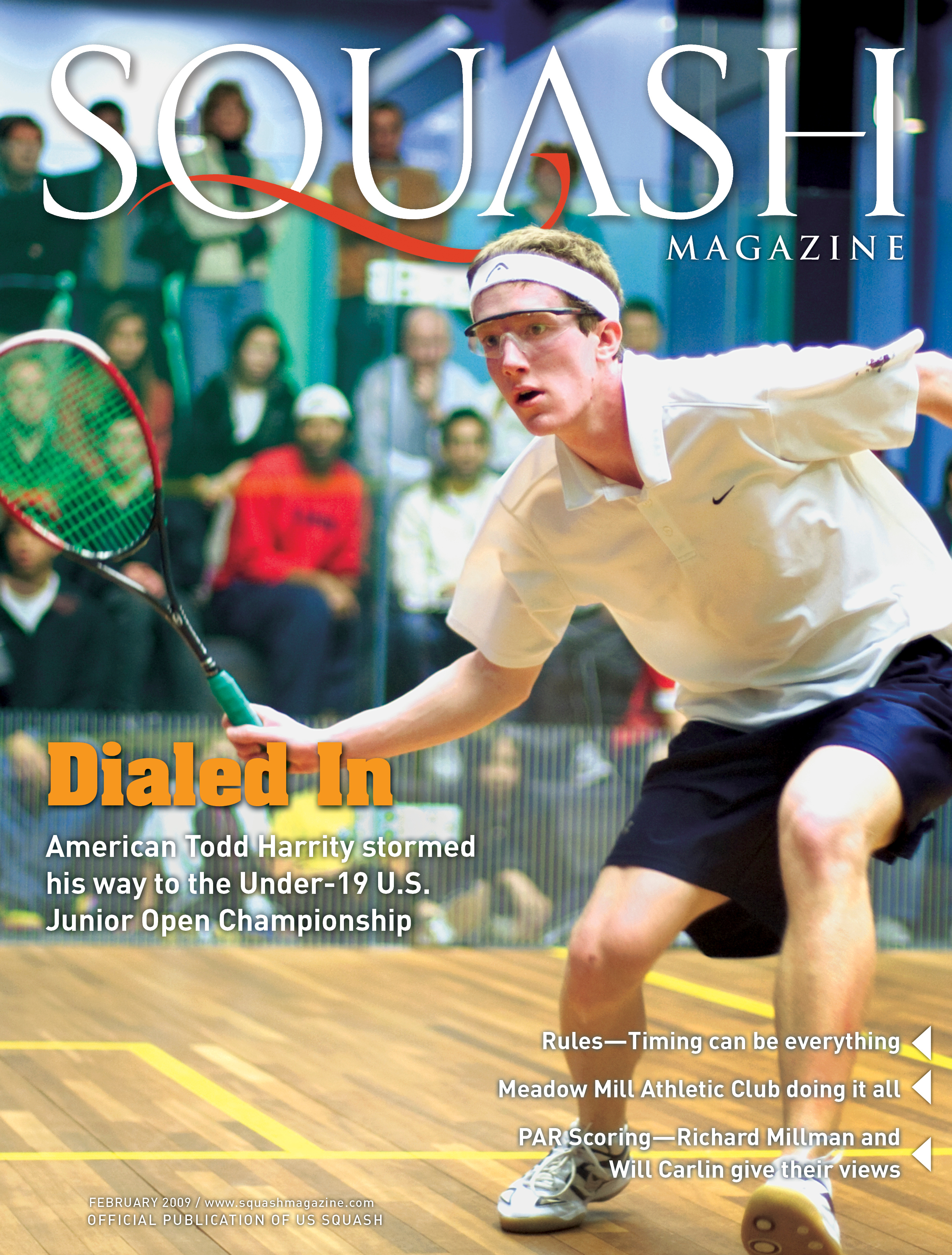By Jay D. Prince
At the risk of beating a dead horse, since both Richard Millman and Will Carlin have chimed in on PAR scoring inside the pages of this edition of Squash Magazine, I’m going to express my views. I’m officially on the fence, but starting to lean toward PAR.
Over the past two months, I’ve received several emails and phone calls from players across the country on this subject. Invariably they have started out negative (toward PAR) and ended up at least neutral.
Just a couple of weeks ago, I fielded a phone call from one person who was inquiring about sending a Letter to the Editor slamming the switch to PAR by U.S. SQUASH. His reasons were numerous: How many people were actually posed in the “unanimously in favor of switching systems camp?”; matches will be too short; who’s going to want to enter a tournament for $100 only to have his/her match last 20-25 minutes?; in older age groups, some matches might only last 10-15 minutes; and on and on.
The individual who called asked me my opinion, and 45 minutes later, he decided not to write the letter (though I wish he had—we would like to receive more letters, hint…hint). So here is my take.
At first, I was opposed to the switch to PAR, primarily for the very reason that matches would be too short. But instead of resisting, I spent quite a bit of time thinking about why this might be. I also watched a number of PSA matches and started drawing a different conclusion. But the real catalyst for me came last fall when I started playing PAR-11 exclusively with Claire Rein-Weston since she was preparing for the US Women’s Team trials—since the World Team Championships would be using PAR-11, the trials would do the same.
The first time Claire and I used PAR, our games were ridiculously short. I’d venture to say that we played 10 games in just over an hour. But how could that be? Using traditional scoring, our typical matches of four or five games lasted upwards of 90 minutes. Hmmm.
The next time we played, I won several games handily and realized that I was winning a number of easy points while Claire was serving. Lightbulb moment! We have become so accustomed to having little to lose while serving, I’d bet that most of our errors come on points we served.
So I spoke with Claire and both of us started changing the way we play. While it’s obvious that under PAR, losing the serve costs a point, the subtlety of this is striking. Think about this for a moment. If I serve trailing, for example, 2-3, then lose my serve immediately followed by Claire winning her next service point, I’m suddenly down 5-2. And that can happen very quickly.
Which brings up another argument levied against PAR. Many people say that if you fall far behind in a game, it’s impossible to catch up, whereas we’ve all been down 8-0 in a game (using traditional scoring) only to come back and win. But what’s the difference? Tins (or, if you prefer, errors). If I’m down 8-0 (traditional scoring) and make an error on my serve, no biggy. I’ll just stay out of the tin, try to get the serve back, and start scoring—by not making errors and working hard to win points. If I’m down 10-0 in PAR, that same tin is huge.
The same holds true under PAR. You cannot make an error at all in the effort to recover from a huge deficit. And I actually like that challenge—both as the player with the advantage and as the player with the huge mountain to climb.
Which brings me to why I’m now enjoying PAR. The quality of my play is improving, simply because I’m so much more aware of the dangers of making errors. My matches with Claire are getting progressively—and noticeably—longer. We now play four or five games in 45-60 minutes, because our error rate has been dropping; our points are longer. Now, instead of lots of meaningless exchanges of serve, most of our time on court is being used to play points—all of which are meaningful.
And what’s not to like about that?




